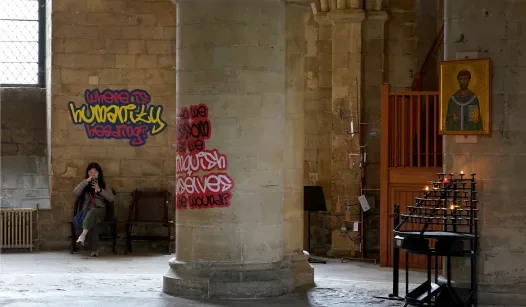In a world where faith often faces scrutiny and skepticism, the role of religious institutions, particularly missionary churches, is more vital than ever. These places of worship, such as the historic Canterbury Cathedral, are not merely architectural marvels but also sanctuaries inviting individuals to explore spirituality and community. Instead of being venues for modern art installations or graffiti, these churches strive to foster a welcoming environment for believers and seekers alike.
Missionary churches, in particular, have a unique mission: to spread their faith and engage with the community. They aim to connect with individuals on a personal level, offering a sense of belonging and purpose. This mission is rooted in the belief that faith can transform lives, providing hope and guidance in a complex world.
The significance of churches like Canterbury extends beyond their religious functions. They serve as cultural and historical landmarks, representing centuries of tradition and resilience. The stories etched into their walls resonate with countless generations, reminding us of the enduring nature of faith. However, the challenge lies in adapting these age-old institutions to meet the needs of contemporary society.
In recent years, there has been a growing trend of incorporating modern elements into traditional spaces. While some may view this as a departure from sacredness, others argue that it represents a necessary evolution. The inclusion of art, music, and community events can breathe new life into these spaces, attracting a diverse audience and encouraging dialogue about faith and its relevance today.
The juxtaposition of modernity and tradition raises important questions about the identity of religious institutions. Can they remain true to their core values while embracing change? How can they effectively engage with younger generations who may feel disconnected from organized religion? The answers to these questions will shape the future of faith communities across the United States and beyond.
As we reflect on the role of churches like Canterbury, it’s essential to recognize the importance of inclusivity. Missionary churches should not only focus on attracting congregants but also on creating an environment where everyone feels welcome, regardless of their background or beliefs. This approach fosters open dialogue and understanding, allowing individuals to explore their spirituality without fear of judgment.
Moreover, the commitment to community outreach is crucial for the relevance of these institutions. Engaging in social issues, supporting local initiatives, and providing resources for those in need are ways churches can demonstrate their dedication to serving humanity. By addressing the pressing challenges faced by society, they can reaffirm their role as pillars of support and guidance.
In conclusion, the conversation surrounding faith and its place in modern society is ongoing. Churches like Canterbury have the potential to adapt and thrive in this changing landscape, provided they remain open to dialogue and innovation. By inviting individuals to join their mission and fostering a sense of community, they can continue to play a vital role in the spiritual and cultural fabric of our lives. The challenge lies not in resisting change but in embracing it while staying true to the core values that define their existence.
